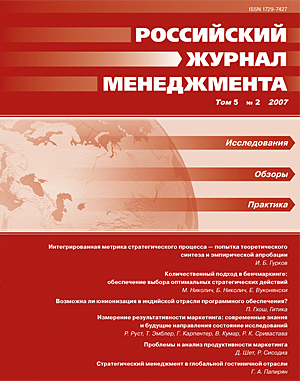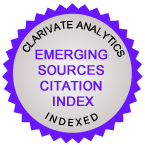Интегрированная метрика стратегического процесса — попытка теоретического синтеза и эмпирической апробации
Аннотация
Исследование посвящено конструированию интегральной метрики стратегического процесса в попытке связать целеполагание, стратегическую рефлексию и выполнение стратегических действий. Показано, что отдельные элементы данной метрики доказали свою пригодность к использованию в эмпирических исследованиях в технике массовых опросов. Автором сделан ряд выводов о характере стратегического процесса в российских фирмах — высокой «целенаправленности» деятельности российских фирм, сопоставимости условий стратегического развития российских фирм с международным контекстом. Продемонстрировано, что практика российского бизнеса «дозрела» до ее анализа адекватным инструментарием стратегических исследований, что повышает требования к отечественным исследованиям в отношении встраивания результатов анализа в общий контекст мировых научных поисков.
Скачивания
Библиографические ссылки
REFERENCES IN LATIN ALPHABET
Загрузки
Опубликован
Как цитировать
Выпуск
Раздел
Лицензия
Статьи журнала «Российский журнал менеджмента» находятся в открытом доступе и распространяются в соответствии с условиями Лицензионного Договора с Санкт-Петербургским государственным университетом, который бесплатно предоставляет авторам неограниченное распространение и самостоятельное архивирование.





